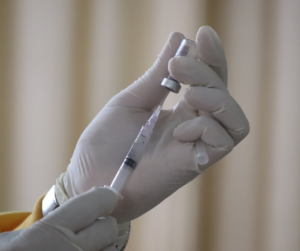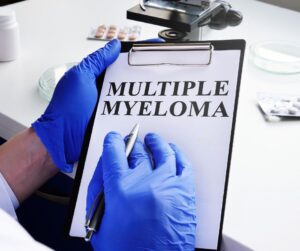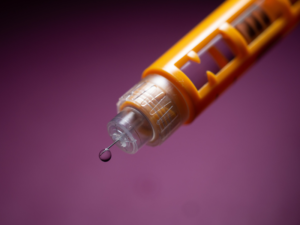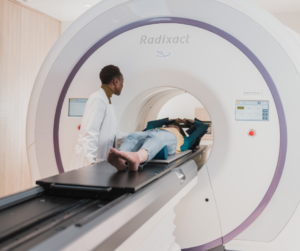Elizabeth S. Waxman, BSN, RN, MSN, ANP-BC
Hemophagocytic lymphohistiocytosis (HLH) is a rare, potentially fatal syndrome characterized by unchecked and persistent activation of cytotoxic T cells and natural killer (NK) cells.1 This uncontrolled immune response leads to increased secretion of inflammatory cytokines and macrophage activation, causing systemic inflammatory signs and symptoms.1 The immune system responds to a physiologic trigger which causes the body to mount a strong and destructive immunologic response, often resulting in critical illness mimicking severe sepsis.2
HLH is classified as primary or familial-occurring in the presence of an underlying predisposing genetic defect in immune function-or secondary (reactive) as a response to a physiologic trigger (eg, infectious, malignant, auto-immune) without the underlying predisposing genetic defect.1 HLH associated with malignancy (M-HLH) refers to HLH that occurs due to the malignancy or happens during cancer treatment.3 The incidence of M-HLH is low, cited as 1% with a median survival of 1.5-2.5 months.4 As immunotherapy is now a key treatment for various malignancies, the oncology team should be aware that there are reported cases of immune checkpoint inhibitor (ICI)-related HLH.5 ICIs can trigger uncontrolled activation of T cells causing hypersecretion of cytokines.5 Retrospective, observational, cross-sectional studies have shown that the incidence of ICI-related HLH is estimated to be less than one percent (<1%).6
There are both clinical and laboratory manifestations associated with HLH. The clinical manifestations include fever, splenomegaly, neurologic dysfunction; laboratory findings: coagulopathy, liver dysfunction, cytopenias, hypertriglyceridemia, hyperferritinemia, hemophagocytosis, and diminished NK cell activity.1 The most commonly used and widely accepted diagnostic criteria for HLH are the HLH-2004 criteria from the Histiocyte Society.1 Using the HLH-2004 criteria, 5 of 8 of the following must be present:1
1) Fever
2) Splenomegaly
3) Cytopenias affecting > 2 lineages- hemoglogin < 9 g/dL, platelet count < 100 x 109/L, absolute neutrophil count < 1 x 109/L;
4) Hypertriglyceridemia and/or hypofibrinogenemia-tirglycerides > 265 mg/dL, fibrinogen < 150 mg/dL;
5) Hemophagocytosis in bone marrow, spleen, or lymph nodes
6) Low or absent NK cells
7) Ferritin > 500µg/L
8) sCD 25 (sIL2Rα) > 2400 U/ml
Another, newer scoring system that estimates the probability of reactive secondary HLH is the HScore.7 The HScore uses weighted diagnostic criteria, awarding points for: immunosuppression; fever; organomegaly; triglyceride, ferritin, alanine aminotransferase, and fibrinogen levels; cytopenias; and the presence of hemophagocytosis in bone marrow aspirate.7 Higher scores indicate a greater likelihood of HLH.8 The HScore is available online (http://saintantoine.aphp.fr/score/).8 Physical examination should focus on rashes, bleeding (ecchymotic areas) lymphadenopathy, organomegaly (hepatosplenomegaly) neurologic evaluation.9 Laboratory tests: CBC with differential; coagulation studies including fibrinogen and D-dimer; liver function tests (LFTs) with ALT, AST, GGT, total bilirubin, albumin, LDH; fasting serum triglycerides; serum ferritin; and soluble IL-2 receptor alpha (sCD25 or sIL-2R), IL-18, and CXCL9; bone marrow aspirate and biopsy; cultures-blood, urine; EKG, echocardiogram, chest x-ray; lumbar puncture; MRI brain; CT neck, chest, abdomen, pelvis.9
The treatment for HLH depends on the severity of the presenting symptoms and the triggers.8 Goals of care include: eliminating the underlying trigger; suppressing the hyperinflammation; eliminating activation of immune cells, and replacing the defective immune system.10,11 High-dose glucocorticoids, etoposide, methotrexate, and cyclosporin are major components of the treatment regimen.12-14 Henzen, et al (2006) published a case study documenting the use of infliximab to treat HLH.15
HLH is a rare syndrome for which the clinician should have an awareness. Patients may present with signs similar to sepsis, or other treatment-related toxicities. It behooves the treating team to request a hematology consult early if the patient is suspected of having HLH.8 Treatment is aimed at removing the trigger and suppressing the immune system and hyperinflammation.8
References
- Al-Samkari, H., & Berliner, N. (2018). Hemophagocytic Lymphohistiocytosis. Annual review of pathology, 13, 27-49. https://doi.org/10.1146/annurev-pathol-020117-043625
- Machowitz, R., Janka, G., & Wiktor-Jedrzejczak, W. (2017). Similar but not the Same: Differential diagnosis of HLH and sepsis. Critical reviews in oncology/hematology. 114, 1-12. https://doi.org/10.1016/j.critrevonc.2017.03.023
- Sadaat, M., & Jang, S. (2018). Hemophagocytic Lymphohistiocytosis with Immunotherapy: brief review and case report. Journal for immunotherapy of cancer, 6(1), 49. https://doi.org/10.1186/s40425-018-0365-3
- Daver, N., & Kantarjian, H. (2017). Malignancy-associated haemophagocytic lymphohistiocytosis in adults. The Lancet. Oncology, 18(2), 169-171. https://doi.org/10.1016/S1470-2045(17)30004-9
- Takahashi, H., Koiwa, T., Fujita, A., Takayuki, S., Tagashira, A., & Iwasaki, Y. (2020). A case of pembrolizumab-induced hemophagocytic lymphohistiocytosis successfully treated with pulse glucocorticord therapy. Respiratory medicine case reports, 30, 101097. https://doi.org/10.1016/j.rmcr.2020.101097
- Noseda, R., Bertoli, R., Müller, L., & Ceschi, A. (2019). Haemophagocytic lymphohistiocytosis in patients treated with immune checkpoint inhibitors: analysis of WHO global database of individual case safety reports. Journal for immunotherapy of cancer, 7(1),117. https://doi.org/10.1186/s40425-019-0598-9
- Horne, A., Wickström, R., Jordan, M. B., Yeh, E. A., Naqvi, A., Henter, J. I.,& Janka, G. (2017). How to Treat Involvement of the Central Nervous System in Hemophagocytic Lymphohistiocytosis. Current treatment options in neurology, 19(1), 3. https://doi.org/10.1007/s11940-017-0439-4
- Skinner, J., Yankey, B., & Shelton, B. K. (2019). Hemophagocytic Lymphohistiocytosis. AACN advanced critical care. 30(2), 151-164. https://doi.org/10.4037/aacn2019463
- McClain, K. L, & Eckstein, O. (2021). Clinical Features and Diagnosis of Hemophagocytic Lymphohistiocytosis. UpToDate website. https://www/uptodate.com/contents/clinical-features-and-diagnosis-of-hemophagocytic-lymphohistiocytosis. Updated April 19, 2021. Accessed May 28, 2021.
- McClain, K.L. (2020). Treatment and Prognosis of Hemophagocytic Lymphohistiocytosis. UpToDate website. https://www.uptodate.com/contents/treatment-and-prognosis-of-hemophagocytic-lymphohistiocytosis. Updated May 11, 2020. Accessed August 13, 2021.
- Janka, G. E., & Lehmberg, K. (2014). Hemophagocytic Syndromes-An Update. Blood reviews, 28(4), 135-142. https://doi.org/10.1016/j.blre.2014.03.002
- Wang, Y., & Wang, Z. (2017). Treatment of hemophagocytic lymphohistiocytosis. Current opinion in hematology, 24(1), 54-58. https://doi.org/10.1097/MOH.0000000000000302
- Henter, J. I., Horne, A., Arico, M., Egeler, R. M., Filipovich, A. H., Imashuku, S., Ladisch, S., McClain, K., Webb, D., Winiarski, J., Janka, G. (2007). HLH-2004: Diagnostic and therapeutic guidelines for hemophagocytic lymphohistiocytosis. Pediatric blood & cancer, 48(2), 124-131. https://doi.org/10.1002/pbc.21039
- Hayden, A., Park, S., Giustini, D., Lee, A. Y. & Chen, L. Y. (2016). Hemophagocytic syndromes (HPSs) including hemophagocytic lymphohistiocytosis (HLH) in adults: A systemic scoping review. Blood reviews, 30(6), 411-420. https://doi.org/10.1016/j.blre.2016.05.001
- Henzen, T., Nagafuji, K., Tsukamoto, H., Miyamoto, T., Gondo, H., Imashuku, S., & Harada, M. (2006). Success with infliximab in treating refractory hemophagocytic lymphohistiocytosis. American journal of hematology, 81(1), 59-61. https://doi.org/10.1002/ajh.20462

Elizabeth S. Waxman, BSN, RN, MSN, ANP-BC
The University of Texas MD Anderson Cancer Center – Department of Thoracic/Head & Neck Medical Oncology







